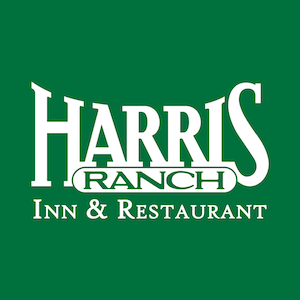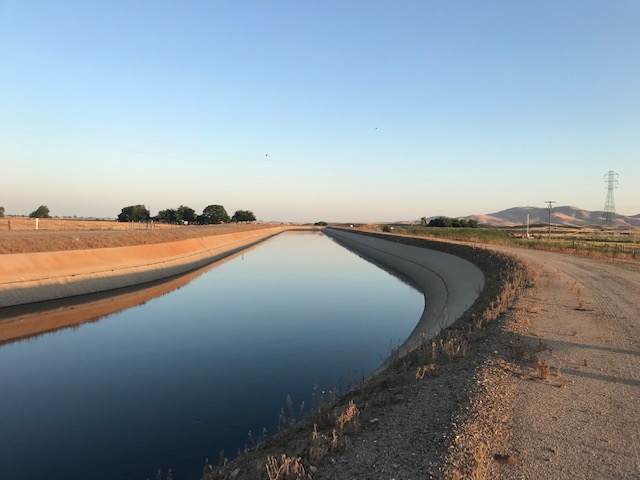The Kaweah Delta Water Conservation District held its Monday, November 2, 2021, board of directors meeting at its Farmersville headquarters and online with GoToMeetings, an online meeting platform only slightly better than Microsoft Teams but a far cry from the grace and ease of Zoom. However, I will say it was much easier today than in the past to tune in and turn on.
The Meeting
The meeting began at 9:04am with Chairman Don Mills calling it to order and taking roll. General Manager Mark Larsen said the virus has rolled through the office but they’re still moving forward. He also said there will be a tour of the Hannah Ranch to see the new turnouts and such later today. There was no public comment.
Water Report
Water Master Vic Hernandez said October yielded half the rain received in all of last year and has resulted in some in flow and may even trigger a flood release. Larsen said the Army Corps of Engineers has changed the flood control diagram up in Mendocino after the atmospheric rivers hit in the past. Larsen said they’d like a change in flood control but one must be careful what one wishes for when the government is involved. He said the Corps is looking at a three-year study before it implements anything on the Kaweah River watershed. Larsen said over the years there have been changes in how much storage has been retained for flood control. He said there has been decent cooperation with Sacramento and the Corps but he said staff will keep a close eye on this so this doesn’t negatively impact operations for KDWCD water users.
Army Corps of Engineers has changed the flood control diagram up in Mendocino after the atmospheric rivers hit in the past. Larsen said they’d like a change in flood control but one must be careful what one wishes for when the government is involved. He said the Corps is looking at a three-year study before it implements anything on the Kaweah River watershed. Larsen said over the years there have been changes in how much storage has been retained for flood control. He said there has been decent cooperation with Sacramento and the Corps but he said staff will keep a close eye on this so this doesn’t negatively impact operations for KDWCD water users.
Hernandez said he’s been in talks with the Corps and he said the St. Johns River channel is a good reserve to direct flood flows allowing better flexibility of releases. There is a need to hang on to as much water in the reservoirs for needs later in the year but the capacity also has to take into account flood waters.
Director Chris Tantau asked if SGMA has impacted the operations since the focus on recharge has been elevated. Larsen said there are more basins available and the measuring accuracy has improved tremendously. An agency like Kaweah Delta can go to the Corps and give a pretty good picture of what amount of flood spreading can take place. Larsen said Hernandez has done a very good job at keeping track and communicating this information with the Corps. Finding a balance is very important because if too much flood release takes place it can negatively impact the Tulare Lake bottom.
and give a pretty good picture of what amount of flood spreading can take place. Larsen said Hernandez has done a very good job at keeping track and communicating this information with the Corps. Finding a balance is very important because if too much flood release takes place it can negatively impact the Tulare Lake bottom.
Tantau asked if the current diagram is as old as Terminus Dam and engineer Dennis Keller said yes, pretty much. He pointed out the way growers and districts are viewing recharge is much different with a greater willingness to allow flood flows as recharge sources.
CVP News
Keller said Michael Jackson at the Fresno office of the US Bureau of Reclamation has announced a 25 percent allocation but that will impact carryover. He did say this will add some flexibility to get that extra water out next year. He said 35,000 a/f of inflow on the upper San Joaquin has allowed for a larger allocation. Keller talks in a way that isn’t always easy to follow. He has a lot and I mean a lot of knowledge about the subject and sometimes his explanations are at a fairly high level. In other words I didn’t understand everything he said. But there are opportunities presents and challenges as well.
upper San Joaquin has allowed for a larger allocation. Keller talks in a way that isn’t always easy to follow. He has a lot and I mean a lot of knowledge about the subject and sometimes his explanations are at a fairly high level. In other words I didn’t understand everything he said. But there are opportunities presents and challenges as well.
Friant
Larsen reported the Bureau awarded a $177 million contract to start repairs on the Friant Kern Canal. Tantau represents Kaweah Delta on the Friant Water Authority board and said there is good reason to believe work will start before the end of the year. Two contractors teamed up and there are pre-construction meetings taking place to ensure there is a clear channel of communication should any problems arise in the future. One of the contractors is Tudor Perini, a High Speed Rail contractor and that doesn’t give anyone a warm fuzzy feeling.
Tantau also briefed the board on the San Luis Delta Mendota Water Authority since Friant is a major payer to that JPA. He talked about the proposed, new power lines for the SLDM portion of the CVP.
Hannah Ranch
Larsen reported on construction progress on the Hannah Ranch recharge project Kaweah Delta is building. Keller was asked if there is a clay wall along the Kaweah River and he responded the amount of seepage is low enough that the extra expense of a clay wall isn’t worth it. However, they are keeping an eye on the situation as it could change. Larsen said so far things are looking good. He asked Keller to report on the turnout structures.
responded the amount of seepage is low enough that the extra expense of a clay wall isn’t worth it. However, they are keeping an eye on the situation as it could change. Larsen said so far things are looking good. He asked Keller to report on the turnout structures.
Keller explained the meter vault is coming along. This is the connection to the Friant Kern Canal, the turn out. The meter structure has a non-permeable membrane to keep water out of any of the areas that need to be mold free. The concrete will allow some osmosis I guess you’d say, over the years and that could harm the measuring devices. So, now the moisture won’t impact the electronics. Keller also said workers are close to pulling the coffer dam from the FKC. He said the coffer dam sits on a pressure release valve that had to be cut. During the next dewatering of the FKC it will be repaired. There’s a closed session discussion about crossing under State Route 245 with pipes. It was also mentioned the low flows this year were helpful with the intertie with the canal. There was also a $22,000 change order for the project and it was approved.
coffer dam from the FKC. He said the coffer dam sits on a pressure release valve that had to be cut. During the next dewatering of the FKC it will be repaired. There’s a closed session discussion about crossing under State Route 245 with pipes. It was also mentioned the low flows this year were helpful with the intertie with the canal. There was also a $22,000 change order for the project and it was approved.
There is also a check structure that needs to get a construction award. There were three bids and they are all close to budget. The award doesn’t have to take place for a month or more and this time can be used gathering permits.
GKGSA
Larsen said Greater Kaweah GSA GM Eric Osterling couldn’t be at this meeting so he filled in. He said the core of the pumping allocation proposal has stayed pretty much the same but there have been a couple of good suggestions from the stakeholders. There will be a GKGSA Stakeholder meeting this afternoon and it promises to be a good one. There have been question through out the Kaweah Subbasin about the GKGSA pumping figures. Mills said the figures of 2.4 to 3 acre feet measured by evapotranspiration figures provided by Land IQ’s satellite services have been mentioned. Mills said there is a plan that can bring down the amount of groundwater pumping by 2025-2026 in a significant number. There is a two tiered pumping fee of $75 and $100 per acre feet along with a penalty tier on the table.
been question through out the Kaweah Subbasin about the GKGSA pumping figures. Mills said the figures of 2.4 to 3 acre feet measured by evapotranspiration figures provided by Land IQ’s satellite services have been mentioned. Mills said there is a plan that can bring down the amount of groundwater pumping by 2025-2026 in a significant number. There is a two tiered pumping fee of $75 and $100 per acre feet along with a penalty tier on the table.
All of the GSAs in the Southern San Joaquin Valley has been hit with a great deal of pressure brought on by the two dry years. It was said the state’s Department of Water Resources has been pretty good to work with. The focus has been reviewing Groundwater Sustainability Plans. However, the State Board, although it has no legislative role in reviewing the GSPs has been trying to get its nose and nuts in the middle of things by sending DWR letters of concern about the GSP process. This is considered very inappropriate. But let us not forget the State Board Executive Directors’ quote posted on the State Board website, “There could not be a more critical challenge facing us at this time than the challenge of achieving racial equity,” Eileen Sobek. So one wonders about the State Board’s focus and legislators are starting to question it as well. The entire state government needs a top down clean up. The powers that be operate as though the state government is supposed to involve itself in every conceivable matter instead of operating in its limited role. This is in great part due to one political party having a super majority. It decreased the amount of accountability. The State Board for instance. It is a five member board appointed by the governor, not an elected body. Yet it has far reaching powers and really bugger up stuff as there is no incentive for accountability. The governor does the appointing and whether by narcissism or fear doesn’t want to admit the need for a change.
inappropriate. But let us not forget the State Board Executive Directors’ quote posted on the State Board website, “There could not be a more critical challenge facing us at this time than the challenge of achieving racial equity,” Eileen Sobek. So one wonders about the State Board’s focus and legislators are starting to question it as well. The entire state government needs a top down clean up. The powers that be operate as though the state government is supposed to involve itself in every conceivable matter instead of operating in its limited role. This is in great part due to one political party having a super majority. It decreased the amount of accountability. The State Board for instance. It is a five member board appointed by the governor, not an elected body. Yet it has far reaching powers and really bugger up stuff as there is no incentive for accountability. The governor does the appointing and whether by narcissism or fear doesn’t want to admit the need for a change.
The meeting then went into closed session at 10:00am. Go be good to each other.
DISCLAIMER OF RESPONSIBILITY; Waterwrights.net strives to provide readers and clients with the most complete, up-to-date, and accurate information available. Nevertheless, Waterwrights.net does not serve as a guarantor of the accuracy or completeness of the information provided, and specifically disclaims any and all responsibility for information that is not accurate, up-to-date, or complete. Waterwrights.net’s clients therefore rely on the accuracy, completeness and timeliness of information from Waterwrights.net entirely at their own risk. The opinions expressed in this report are those of the author and do not represent any advertisers or third parties.
ALL RIGHTS RESERVED. Copyright 2021 by www.WaterWrights.net/DAW
Kaweah Delta Water Conservation District
2975 N. Farmersville Blvd.
Farmersville, California 93223
559/747-5601 KDWCD is part or the Greater Kaweah GSA DWR #5-022.11
Board of Directors
Don Mills – President, Chris Tantau – Vice-President, Ron Clark, Jimi Valov, Jeff Ritchie, Mike Chrisman & Brian Watte
Management
Mark Larsen, General Manager – mlarsen@kdwcd.com
Terry Stafford, Facilities Manager – tstafford@kdwcd.com
Debbie Vierra, Administrative/HR Coordinator – dvierra@kdwcd.com
Larry Dotson, Senior Engineer – ldotson@kdwcd.com
Shane Smith, Projects/Administrative Manager – ssmith@kdwcd.com
Office and Field Staff
Equipment Operators – Jesus Sandoval, Chris Bell
Water Master – Victor Hernandez
Office Assistant – Kathleen Halvorsen
Primary Consultants
Bruce George – Special Projects Consultant
Dennis Keller – Civil Engineer (Keller/Wegley Consulting Engineers)
Aubrey Mauritson – Attorney (Ruddell, Cochran, Stanton, Smith & Bixler, LLP)
From the Kaweah Delta website:
The Kaweah Delta Water Conservation District (KDWCD) was formed in 1927, under the provisions of California state law known as the Water Conservation Act of 1927, for the purpose of conserving and storing waters of the Kaweah River and for conserving and protecting the underground waters of the Kaweah Delta. Later the Water Conservation Act, as well as the purpose of the District, was expanded to include power generation and distribution.
The District is located in the south-central portion of the San Joaquin Valley and lies in portions of both Tulare and Kings Counties. The total area of the District is about 340,000 acres with approximately 255,000 acres located in the western portion of Tulare County and the balance, or 85,000 acres, in the northeastern portion of the Kings County.
The Districts lands are primarily agricultural in nature, although the cities of Visalia and Tulare constitute significant areas of urbanization. Farmersville is the other incorporated area. The population of the District is currently estimated to be in excess of 175,000 people with the principle crops being cotton, misc. field crops, deciduous fruit and nut trees as well as alfalfa.
Numerous public and private entities within the District’s boundaries divert water from the Kaweah River and its distributaries. Nearly all of the lands served with Kaweah River water also are served irrigation water from groundwater, primarily due to the erratic and relatively undependable nature of flow on the Kaweah River. All municipal and industrial water uses within the District are supplied from groundwater.
KDWCD and Tulare Irrigation District (TID), which lies entirely within the boundaries of the Kaweah Delta Water Conservation District, has a long-term contract with the federal Central Valley Project (CVP) for water from the Friant Division of the CVP. TID has historically received substantial quantities of CVP water surplus to the demands of the District which augment the Kaweah River supply.
The District and the Kaweah River groundwater basin have experienced long-term groundwater overdraft estimated in 2007 to be as much as 40,000 acre-feet per year. The District has performed multiple studies of groundwater data to determine the extent and volume of groundwater overdraft within its boundaries. There are currently over 40 recharge basins within the District covering approximately 5,000 acres. While KDWCD owns and operates many of these groundwater recharge basins, it does not provide water banking services for others.
































